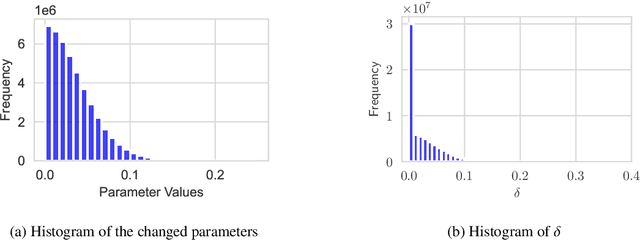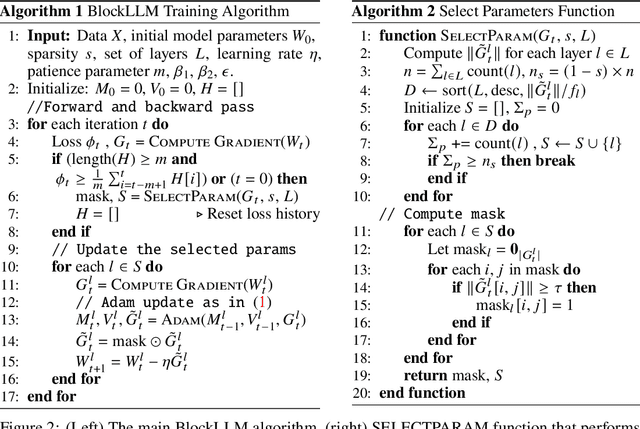BlockLLM: Memory-Efficient Adaptation of LLMs by Selecting and Optimizing the Right Coordinate Blocks
Paper and Code
Jun 25, 2024



Training large language models (LLMs) for pretraining or adapting to new tasks and domains has become increasingly critical as their applications expand. However, as the model and the data sizes grow, the training process presents significant memory challenges, often requiring a prohibitive amount of GPU memory that may not be readily available. Existing methods such as low-rank adaptation (LoRA) add trainable low-rank matrix factorizations, altering the training dynamics and limiting the model's parameter search to a low-rank subspace. GaLore, a more recent method, employs Gradient Low-Rank Projection to reduce the memory footprint, in the full parameter training setting. However GaLore can only be applied to a subset of the LLM layers that satisfy the "reversibility" property, thus limiting their applicability. In response to these challenges, we introduce BlockLLM, an approach inspired by block coordinate descent. Our method carefully selects and updates a very small subset of the trainable parameters without altering any part of its architecture and training procedure. BlockLLM achieves state-of-the-art performance in both finetuning and pretraining tasks, while reducing the memory footprint of the underlying optimization process. Our experiments demonstrate that fine-tuning with only less than 5% of the parameters, BlockLLM achieves state-of-the-art perplexity scores on the GLUE benchmarks. On Llama model pretrained on C4 dataset, BlockLLM is able to train with significantly less memory than the state-of-the-art, while still maintaining competitive performance.
 Add to Chrome
Add to Chrome Add to Firefox
Add to Firefox Add to Edge
Add to Edge